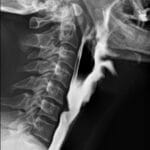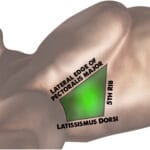This guide provides comprehensive information on diethyl ether safety, including handling, storage, first aid, and emergency response. Understanding and adhering to these guidelines is crucial for minimizing risks and ensuring a safe laboratory environment.
Understanding Diethyl Ether and its Hazards
Diethyl ether, also known as ether, is a colorless, volatile liquid with a characteristic sweet odor. Its chemical formula is C4H10O. While it has historical uses as an anesthetic and a common laboratory solvent, its inherent hazards require careful handling. Let’s explore the key risks associated with diethyl ether:
Flammability and Explosion Risks
Diethyl ether is extremely flammable, both in liquid and vapor form. Its remarkably low flash point of -45°C (-49°F) means it can ignite at very low temperatures, posing significant fire and explosion risks. Diethyl ether vapors can readily form explosive mixtures with air, especially in confined spaces or areas with poor ventilation. This risk is further amplified by its volatility, as it evaporates quickly, increasing the likelihood of flammable vapor accumulation.
Health Hazards
Exposure to diethyl ether can have various adverse health effects:
- Inhalation: Breathing in diethyl ether vapors can cause respiratory irritation, leading to coughing, shortness of breath, and even pulmonary edema in severe cases. It can also induce neurological effects such as drowsiness, dizziness, headaches, and at high concentrations, unconsciousness. Chronic exposure may lead to long-term respiratory issues.
- Ingestion: Swallowing diethyl ether is extremely dangerous and can cause severe internal damage, particularly to the digestive system. Aspiration pneumonia, a serious lung infection caused by inhaling vomit or liquids into the lungs, is a significant risk, especially if vomiting occurs while unconscious due to ether exposure.
- Skin Contact: Diethyl ether can irritate the skin, causing dryness, redness, and in some cases, chemical burns with prolonged exposure.
- Eye Contact: Direct contact with the eyes can cause severe irritation, pain, and potential corneal damage.
Some research suggests a possible link between chronic ether exposure and certain types of cancer, although more studies are needed to confirm this.
Peroxide Formation
A critical hazard associated with diethyl ether is its tendency to form unstable and explosive peroxides upon exposure to air and light. These peroxides can accumulate over time, especially in older ether solutions, and detonate unexpectedly, posing a severe hazard during storage or handling. This underscores the importance of proper storage and regular testing for peroxides.
Environmental Impact
Diethyl ether can negatively impact the environment through groundwater contamination. Its high soil mobility allows it to readily permeate the ground and contaminate groundwater sources. While it doesn’t readily adsorb to sediment or bioaccumulate in aquatic organisms, its potential to pollute drinking water sources requires careful handling and disposal procedures.
Safe Handling Practices
Working safely with diethyl ether requires strict adherence to safety protocols:
Ventilation
- Prioritize a Fume Hood: Always work with diethyl ether under a properly functioning fume hood to effectively remove vapors and minimize the risk of inhalation and fire.
- Ensure Adequate Ventilation: If a fume hood is unavailable, work in a well-ventilated area, ensuring a continuous supply of fresh air to prevent vapor buildup.
Grounding and Bonding
- Prevent Static Discharge: Ground and bond all containers and equipment involved in diethyl ether handling to prevent static electricity buildup, which could ignite the vapors.
- Use Appropriate Equipment: Use anti-static containers and grounding straps to ensure a safe path for static discharge.
Ignition Source Control
- Eliminate Ignition Sources: Strictly prohibit open flames, sparks, hot surfaces, and any other potential ignition sources in areas where diethyl ether is used or stored.
- Explosion-Proof Equipment: Use explosion-proof electrical equipment and wiring in designated ether handling areas.
Personal Protective Equipment (PPE)
- Essential Protection: Always wear appropriate PPE, including chemical-resistant gloves, safety glasses or goggles, and a lab coat to protect against splashes and spills.
- Respiratory Protection: Consider using a respirator or mask if there’s a risk of inhaling vapors, especially in poorly ventilated areas or when handling large quantities.
Spill Response
- Containment and Absorption: In case of a spill, immediately contain the spill using inert absorbent materials like vermiculite, sand, or specialized chemical absorbent pads. Avoid using reactive materials.
- Proper Disposal: Carefully collect the contaminated absorbent material and dispose of it according to hazardous waste regulations.
Safe Storage Procedures
Proper storage is crucial for preventing accidents and minimizing the risks associated with diethyl ether:
Containers
- Airtight and Compatible: Store diethyl ether in tightly closed, airtight containers made of compatible materials, such as amber glass bottles to minimize light exposure, or metal containers with proper grounding. Avoid using plastic containers prone to static buildup.
- Clearly Labeled: Label all containers with the contents, hazards, date received, and any other relevant information.
Storage Location
- Designated Flammable Storage: Store diethyl ether in a designated flammable materials storage cabinet or area that meets safety standards. These cabinets are typically made of metal with special features to prevent fire spread.
- Cool, Dry, and Ventilated: Choose a cool, dry, and well-ventilated area away from direct sunlight, heat sources, and incompatible materials. Refrigeration is often recommended to further minimize peroxide formation.
Peroxide Formation Management
- Use Inhibitors: Add recommended inhibitors to diethyl ether to slow down peroxide formation. Consult the SDS for appropriate inhibitor types and concentrations.
- Regular Testing: Test for peroxides regularly, particularly in containers older than three months. Commercially available peroxide test strips can be used for this purpose.
- Safe Disposal: If peroxides are detected, do not attempt to remove them yourself. Follow the recommended disposal procedures outlined in the SDS or consult with a hazardous waste disposal company.
First Aid and Emergency Response
Knowing how to respond to accidents is crucial for minimizing harm:
Exposure
- Inhalation: Move the victim to fresh air immediately. If breathing is difficult, administer oxygen if trained to do so. If breathing stops, perform CPR. Seek immediate medical attention.
- Skin Contact: Remove contaminated clothing and wash the affected area thoroughly with soap and water for at least 15 minutes. Seek medical attention if irritation persists or burns develop.
- Eye Contact: Immediately flush eyes with plenty of water for at least 15 minutes, gently lifting the upper and lower eyelids occasionally. Seek immediate medical attention.
- Ingestion: Do NOT induce vomiting. If the victim is conscious and alert, give 2-4 cupfuls of milk or water to dilute the substance. Seek immediate medical attention immediately.
Fire
- Appropriate Extinguishers: Use dry chemical, carbon dioxide (CO2), or alcohol-resistant foam extinguishers. Do not use water jets, as they can spread the fire.
- Evacuation and Alert: Evacuate the area and alert emergency personnel immediately.
- Protective Gear for Firefighters: Firefighters should wear full protective gear, including SCBA.
Spills
- Containment and Cleanup: Contain and absorb spills with inert material (e.g., sand, vermiculite). Collect contaminated materials and dispose of them according to hazardous waste regulations. Ensure adequate ventilation during cleanup.
Accessing Safety Data Sheets (SDS)
Always consult the most up-to-date SDS for the specific diethyl ether product you are using. SDSs provide detailed information on hazards, safe handling procedures, first aid measures, and emergency response protocols. You can typically find SDSs online from chemical suppliers or manufacturers like Fisher Scientific, Carl Roth, and Sigma-Aldrich. Your lab should also have readily available copies.
Want to learn more about other medical topics? Discover insights on DIPG survival rate and the latest research findings on the cricopharyngeal bar.
This comprehensive guide provides a thorough overview of diethyl ether safety. While it is based on current best practices and available research, it is essential to acknowledge that scientific understanding is constantly evolving. Always stay informed about the latest safety recommendations and consult the most recent SDS for the specific diethyl ether product you are using. Remember, prioritizing safety is paramount for protecting yourself and others in the lab.
- Unlock Elemental 2 Secrets: Actionable Insights Now - April 2, 2025
- Lot’s Wife’s Name: Unveiling the Mystery of Sodom’s Fall - April 2, 2025
- Photocell Sensors: A Complete Guide for Selection and Implementation - April 2, 2025
















1 thought on “Diethyl Ether SDS: A Comprehensive Guide to Safety and Handling”
Comments are closed.